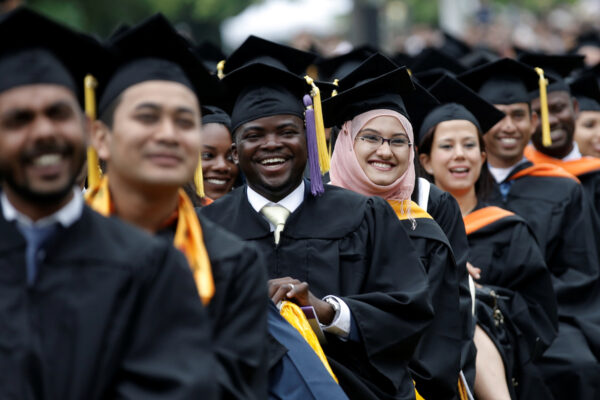A Precipitous Drop in Immediate College Enrollment
Title: High School Benchmarks: National College Progression Rates
Source: National Student Clearinghouse Research Center
The percentage of recent high school graduates who enrolled in college in the fall 2020 semester decreased by nearly 22 percentage points, compared with 2019 high school graduates, according to a new report from the National Student Clearinghouse.
The 22 percentage point drop stands in stark comparison to high school graduation rates, which decreased by only 0.1 percentage points relative to 2019 graduates. The findings appear to suggest COVID-19 has had a substantial negative impact on immediate college enrollment rates, compared with high school completion. Overall, while 35.3 percent of 2019 high school graduates went to college during fall 2019, only 27.7 percent of 2020 graduates enrolled in college this fall.
Unsettling and consistent with other effects of the ongoing pandemic, impoverished and minority communities appear to have been impacted disproportionately. The report finds that relative to last year, the immediate college enrollment rate:
- Decreased nearly 33 percentage points among high poverty high schools – from 29.0 percent in 2019, to 19.7 percent for the class of 2020. Low-income schools experienced similar trends.
- Dropped more than 26 percentage points for high schools where Black or African American and Hispanic or Latino students comprised more than 40 percent of the student population.
For colleges and universities, the decrease in immediate college enrollment has been felt across institutional types, with a 13.8 percentage point change for public four-year institutions relative to last year. This change, however, is eclipsed by the nearly 29 and 30 percentage point drops for private nonprofit four-year institutions and community colleges, respectively. These overall outcomes are similarly stratified, as the percentage of graduates from low-income high schools who enrolled in community colleges decreased by 37.1 percentage points, relative to 2019 graduates. The data present a grim outlook, for the immediate college enrollment of Black, Hispanic, and low-income students, and among community colleges, which disproportionately provide access to these students.
The full report provides additional detail on how immediate enrollment rates differed by income, poverty, race and ethnicity, urbanicity, and the implications for persistence and college graduation outcomes.
—Charles Sanchez
If you have any questions or comments about this blog post, please contact us.


